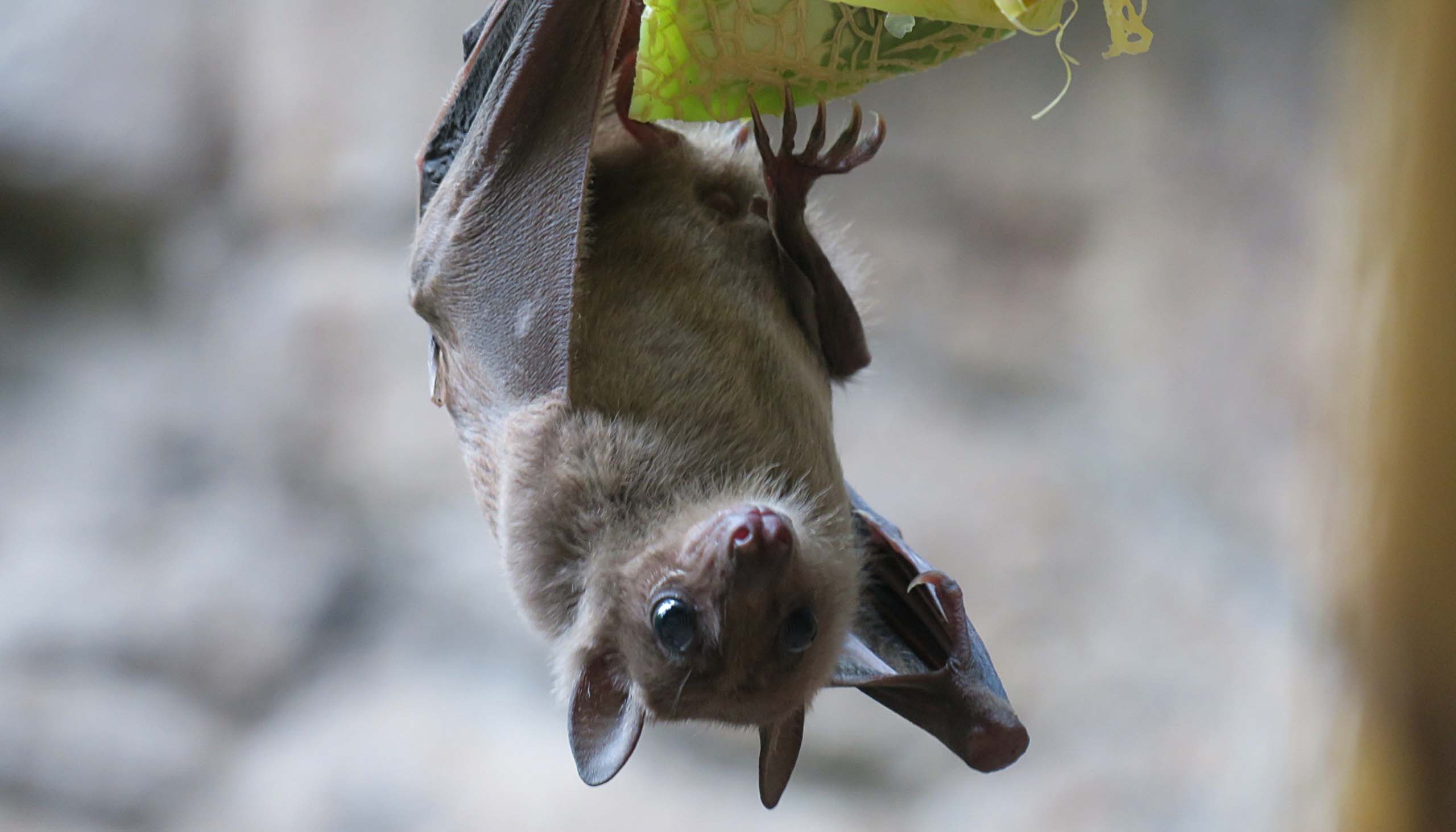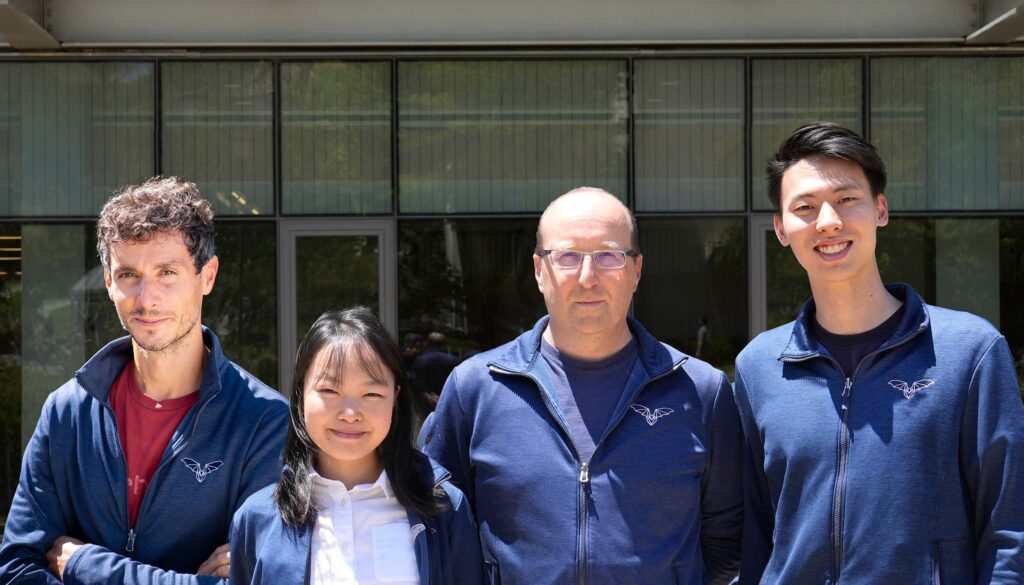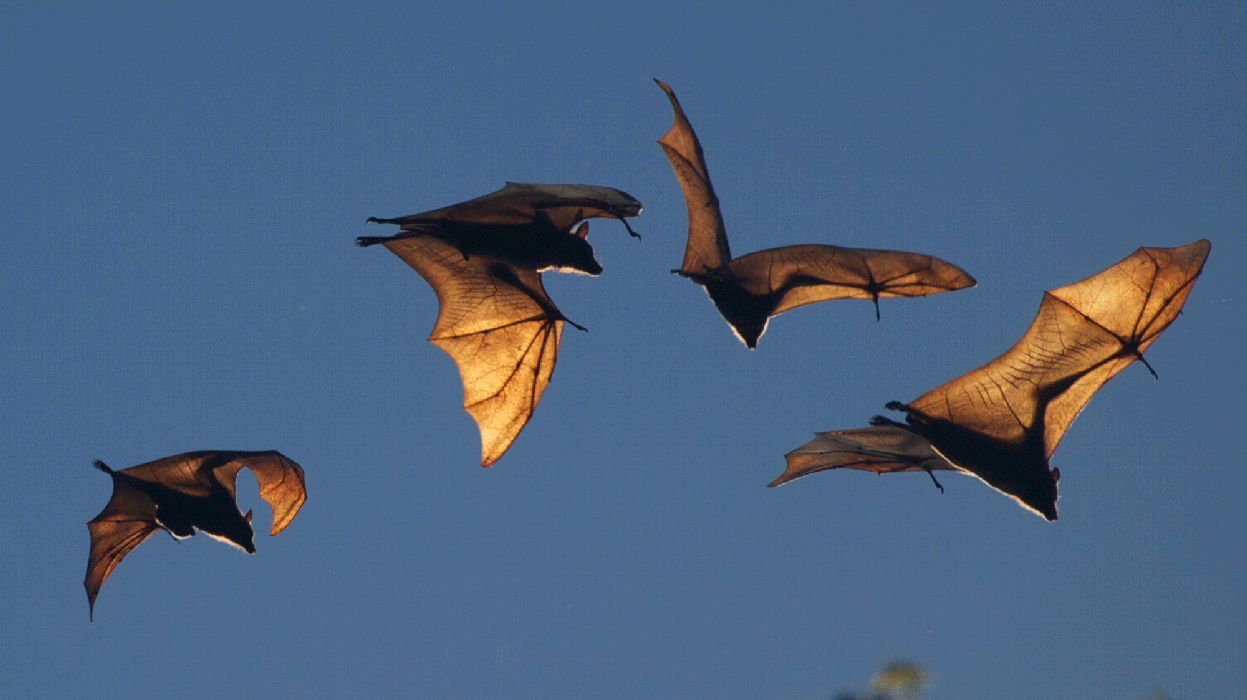UC Berkeley scientists uncover neural mechanisms behind long-term memory
For the first time, neuroscientists have recorded activity from hundreds of neurons simultaneously in bats, providing new clues into how memories are stored.

The Legend Kay via Flickr (CC BY-NC-ND 2.0)
July 9, 2025
Every day, our brain takes countless fleeting experiences — from walks on the beach to presentations at work — and transforms them into long-term memories. How exactly this works remains a mystery, but neuroscientists believe that it involves a phenomenon called neural replay, in which neurons rapidly recreate the same activation sequences that occurred during the original experience. Surprisingly, neural replays can happen both before and after an experience, suggesting they help in both memory storage and also future planning.
In a new study, neuroscientists at the University of California, Berkeley, recorded activity from hundreds of neurons simultaneously in freely flying bats. It is the first time that an ensemble of neurons — rather than just individual neurons — have been studied in concert in bats as they fly around and behave naturally. The data provided surprising new insights into neural replay and theta sequences, another phenomenon which is believed to be involved in memory and planning.
“For the past 20 years, we’ve been recording single neurons in bats and asking the question, ‘When animals are doing interesting things, what do individual neurons do?’” said study senior author Michael Yartsev, an associate professor of neuroscience and bioengineering and a Howard Hughes Medical Institute Investigator at UC Berkeley. “But in the brain, there are emerging properties that you only see when you’re looking at ensembles of neurons. In this study, we looked at these two phenomena — replay and theta sequences — that are only visible when you track many neurons at the same time.”
Better understanding the role of replay and theta sequences in the brains of animals could shed light on how long-term memories are formed and stored in humans, potentially leading to new treatments for neurological disorders like Parkinson’s disease and Alzheimer’s.
The study, which was published online today (July 9) in the journal Nature, was supported by grants from the Air Force Office of Scientific Research, the National Institute of Neurological Disorders and Stroke and the Office of Naval Research.
‘A whole different ball game’
Studying neural replay and theta sequences is tricky because it requires listening in on tens or hundreds of neurons in the brain simultaneously. Over the past decade, Michael Yartsev’s lab has pioneered wireless neural recording technologies in Egyptian fruit bats, giving his team an unprecedented view inside the brains of these navigational experts as they forage in large environments.
Previously, the wireless recording devices were only able to detect signals from small numbers of neurons at a time. In the new study, co-first authors Angelo Forli, Wudi Fan and Kevin Qi successfully utilized high-density silicon electrode arrays that can record hundreds of neurons at once from flying bats. These electrodes can also record local field potentials, a measure of the overall electrical activity in a region of the brain.
“It’s a whole different ball game to record such large ensembles of neurons wirelessly in a flying animal,” Yartsev said. “This was never possible before now.”
To study neural replay and theta sequences, the researchers tracked the activity of “place cells,” a type of neuron that is found in the hippocampus of many species. Individual place cells fire when an animal is in a specific location in space, creating an internal spatial map of their environment.
“If you know that a place cell corresponds to a specific location in space, and the cell is active, then you can infer that the bat is in that location,” said Angelo Forli, who is a postdoctoral researcher at UC Berkeley. “If you can track multiple cells, you can know the path that the bat took.”

Adam Lau/Berkeley Engineering
But place cells aren’t only active when an animal is moving around. Experiments in rodents have shown that they exhibit hippocampal replay during rest, essentially refiring in the same sequence as they did during the movement but in a shorter, time compressed format.
Place cells in rodents also exhibit patterns called theta sequences, which happen during movement, and are believed to represent the animal “looking ahead” just a few steps from its current location.
“Previously, these phenomena were exclusively investigated in rodents, because that’s what the technology allowed. We wanted to find out if they also exist in bats, and if they do, are they any different from what we see in rodents?” said Forli. “We discovered a series of differences that challenge established models.”
A fundamental unit of information processing
In the experiment, the researchers recorded the activity of bats’ place cells as they flew freely around a large flight room and identified which sequences of place cells corresponded with specific trajectories. They were then able to identify replay events, or moments when these same neural sequences occurred when the bats were at rest.
Most of what we know about replay has been gleaned from experiments on rodents in unnatural settings, such as a “sleep box,” to record replay events following behavioral runs. This introduces artificial boundaries between active and inactive states. In contrast, bats have many natural active periods and rest periods within the same experimental session, allowing for the capture of replay under less restrictive conditions. This led to the discovery that replays mostly occur minutes after the experience, and often at locations distant from where the experience took place.
Surprisingly, the researchers also found that the length of these replay events was the same for all flight trajectories, no matter how long the flight was. Essentially, if one neural sequence corresponded to a 10-meter flight, and another neural sequence corresponded to a 20-meter flight, the replays of both of those sequences were time-compressed to the same length.
“We saw that replays for short versus long trajectories had the same duration,” Forli said. “It seems that information is cut down to the same chunk of time regardless of the length of the experience.”
The researchers hypothesize that this constant replay duration may represent an elemental unit of information processing in the brain.
“From a computational perspective, it’s incredibly advantageous to send fixed packets of information,” Yartsev said. “It’s very efficient because whatever is reading that information out knows it will arrive in these fixed sizes.”
The team’s next question concerned theta sequences, a type of ensemble phenomenon that is believed to support replay and to rely on theta oscillations in the hippocampus. However, unlike rodents, bats and humans both lack continuous theta oscillations, which occur at a frequency of approximately 8 Hertz, or eight wingbeats per second. Interestingly, the researchers found sequential network activity during flight in bats, akin to theta sequences in rodents, but with one major difference: unlike rodents, the fast sequences in bats had no relationship to theta oscillations, but were, instead, synced to the bats’ 8 Hz wingbeats.
From the quivering of a mouse’s whiskers to the rhythms of human speech, there are countless other animal behaviors that occur at frequencies around 8 Hz. The researchers hypothesize that these theta sequences might provide a universal neural mechanism for how these behaviors are organized and directed in the animal brain.
“There’s something about this frequency which is ubiquitous across species, particularly mammalian species,” Yartsev said. “Our findings may provide the beginning of a mechanistic understanding of the neural basis of these behaviors, not only in rats and bats, but maybe also in other species like humans.”
Additional support for this research was provided by the New York Stem Cell Foundation, the Vallee Foundation and the Howard Hughes Medical Institute.


